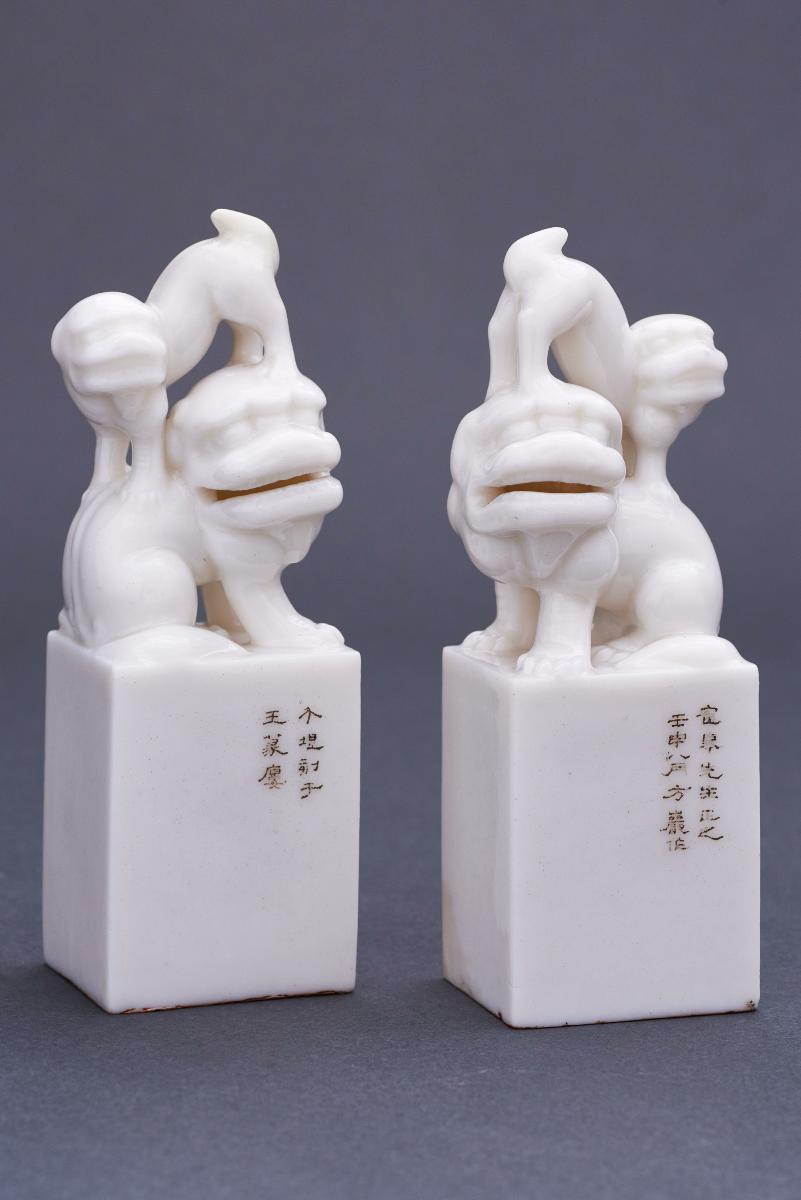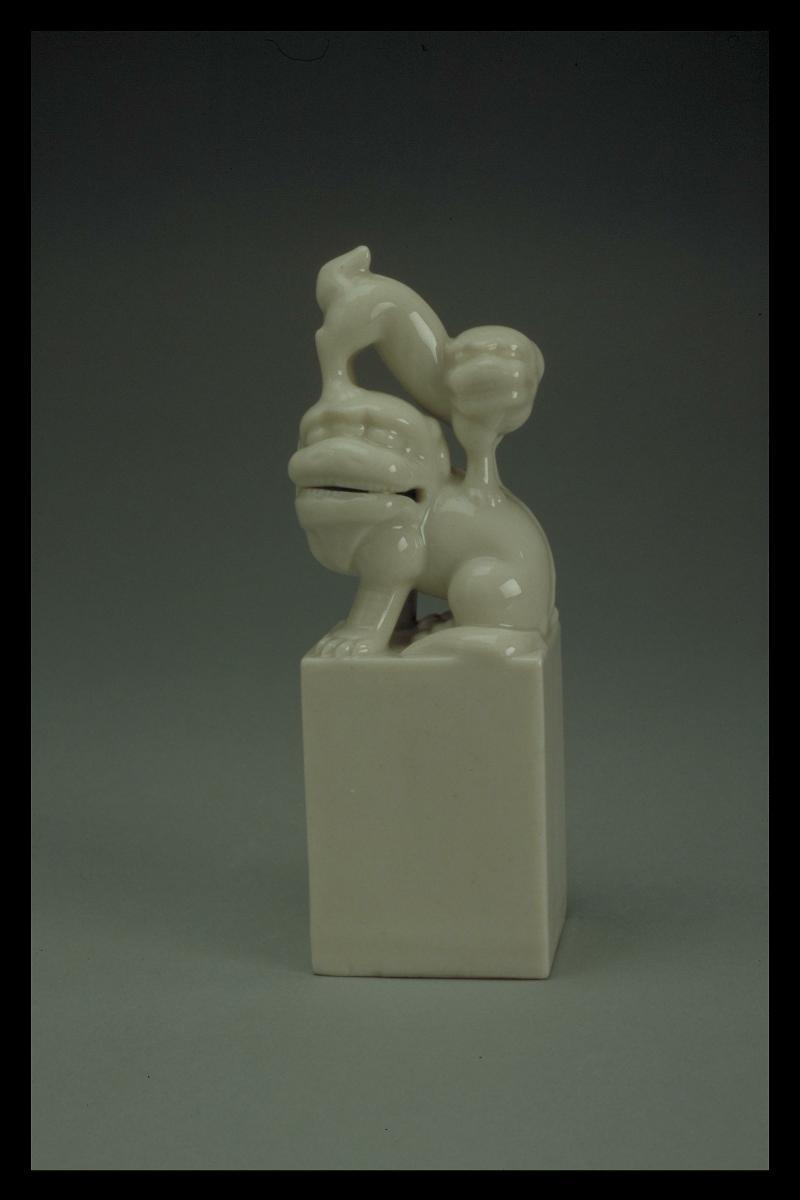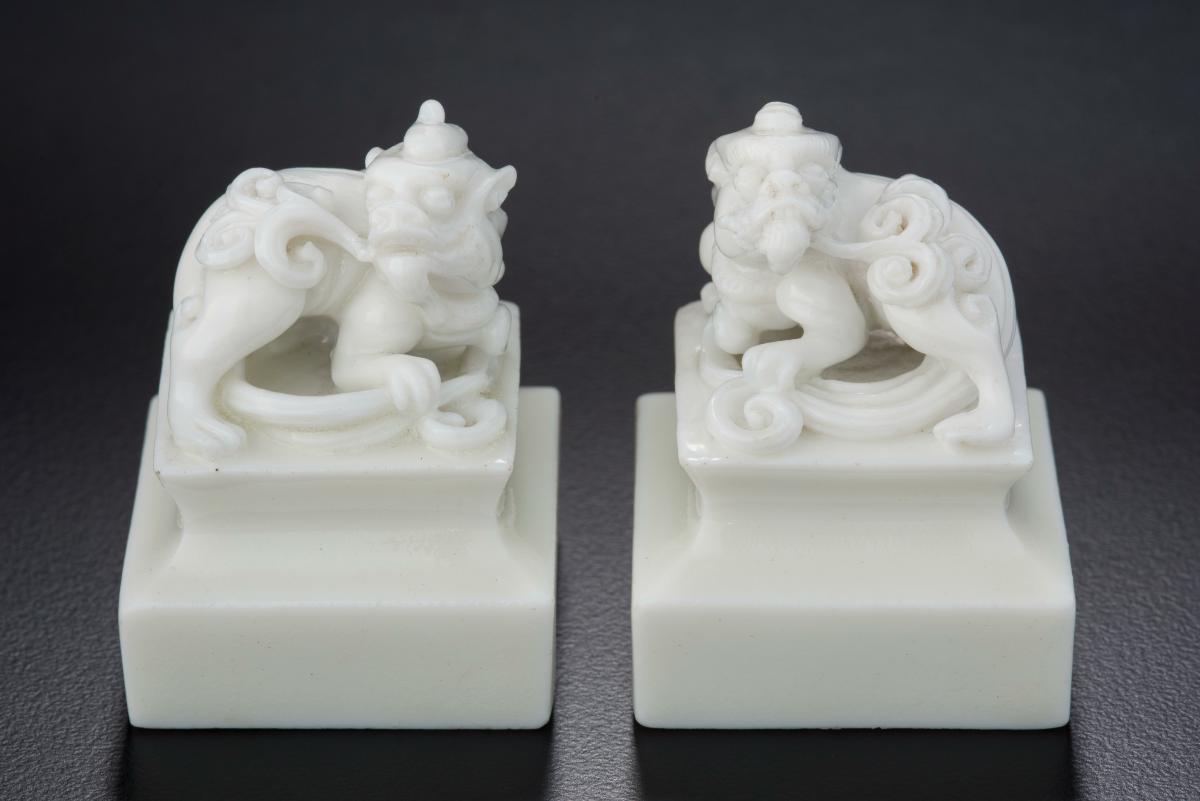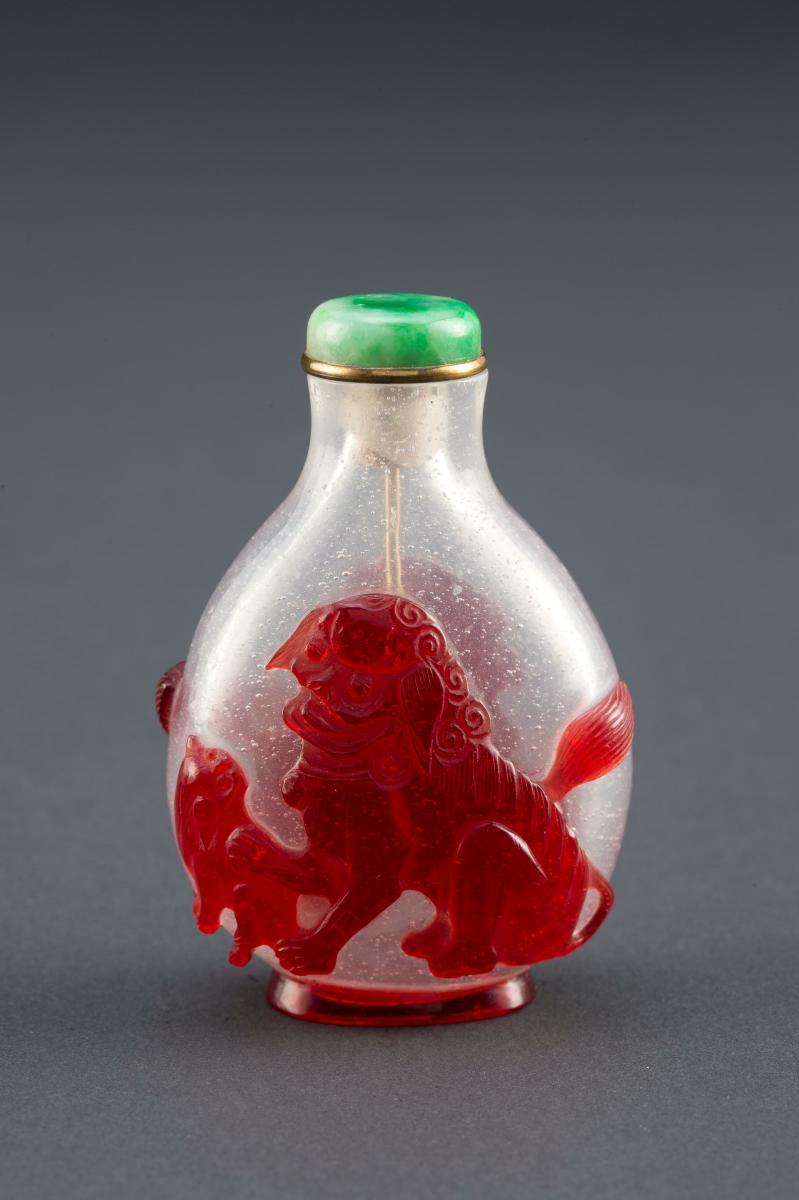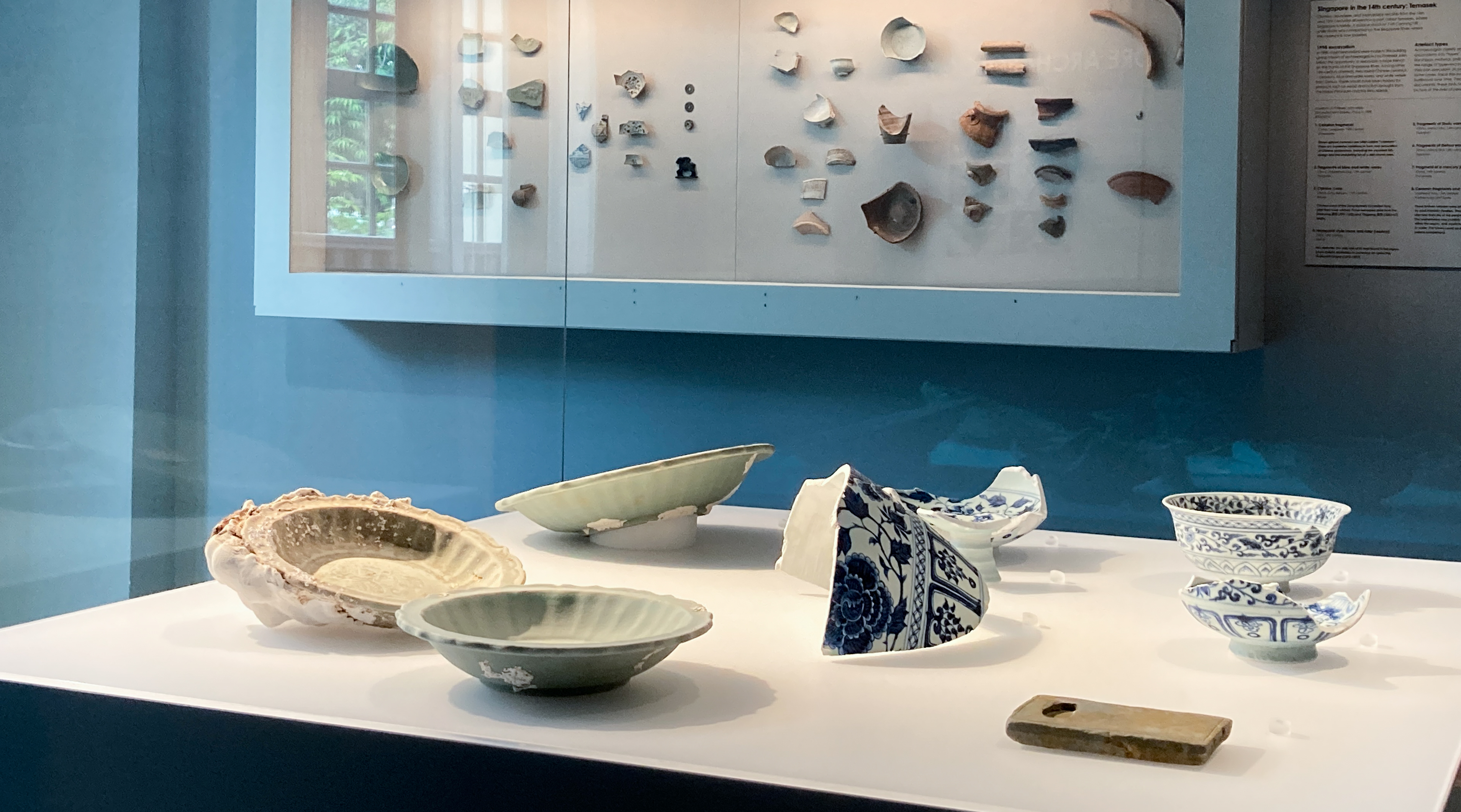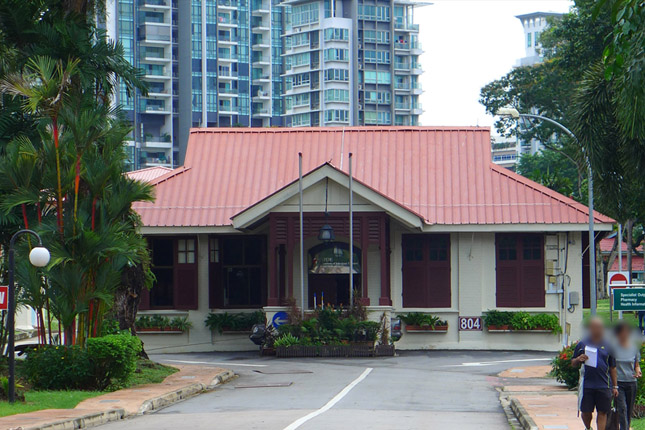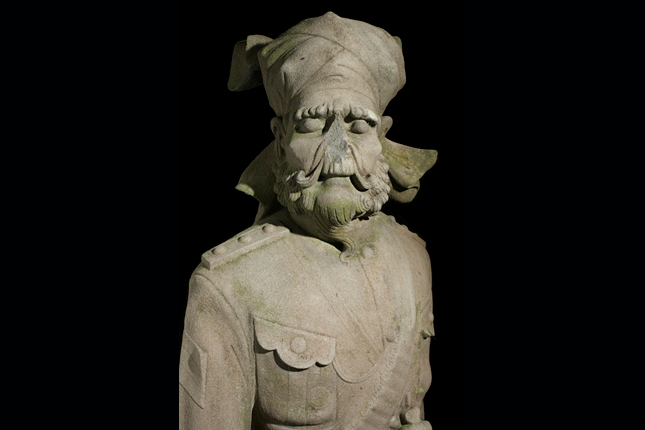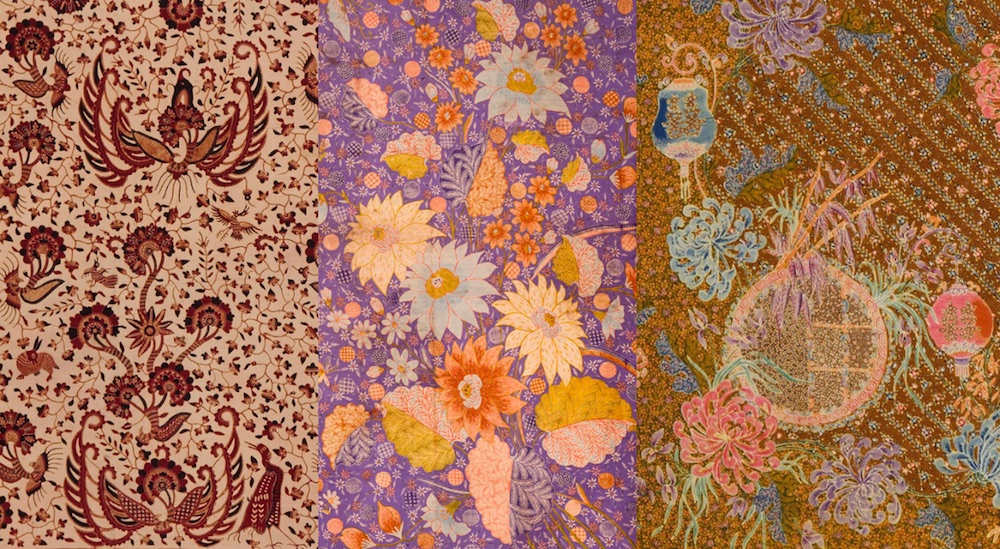Each of this pair of seals comprises a mother lion with cub poised playfully on its shoulders. There is an engraved inscription on the front of the seal with traces of black pigment. The seal on the left reads: “Carved by Ge Ti at Wang Juan Lo” and the other reads: “Humbly presented to He Gao; made by Fang Yan in the eighth month of the renshen year”. The first seal was carved with four characters in regular seal script referring to ‘He Gao’s letter seal ‘while the latter was carved in archaic script referring to ‘(Mr.) Xun of Quan Kou’. Despite the fact that fired porcelain was harder to carve than soap stone, jade and ivory, Dehua seals were nonetheless produced in some quantity. It is thought that this was due to its likeness to whilte or 'mutton fat' jade which was much admired by the literati. Dehua porcelain was fired to a slightly lower temperature than other porcelains, which could have made carving a little easier.One explanation for the height of seals is that the carved names were sometimes erased and re-carved when they passed on to a new owner. A taller base would have facilitated easier handling and use.Dehua, located on the southeast coast of Fujian province, is well known for its production of white porcelain, known to Europeans as 'blanc de Chine'. The earliest Dehua porcelain was produced as early as the 14th century but the production and quality of these porcelain peaked around the 17th and 18th centuries.




